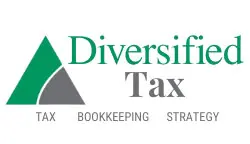Ten Tax Planning Tips for the Summer
Table of Contents
Ten Tax Planning Tips for the Summer
Summer is here, and while you may be thinking about vacations and lazy days spent by the pool, it’s also the perfect time to start thinking about your taxes. That’s right – tax planning isn’t just for the end of the year. In fact, there are a number of tax planning strategies you can implement during the summer months that can help you save money come tax time. From maximizing your retirement contributions to taking advantage of tax-free gifts, there are plenty of ways to keep more of your hard-earned money in your pocket. So, whether you’re a business owner or an individual taxpayer, it’s time to start thinking about your tax planning strategy for the summer. In this article, we’ll share ten tax planning tips to help you make the most of the summer months and save on your taxes.
Why is Tax Planning Important During Summer?
Many people wait until the end of the year to start thinking about their taxes, but by then, it’s often too late to take advantage of many tax planning strategies. Summer is the perfect time to start thinking about your taxes because it gives you several months to implement tax planning strategies that can save you money. Additionally, if you’re a business owner, summer is often a slower time of year, which means you may have more time to focus on tax planning. By starting your tax planning early, you’ll be able to take advantage of tax breaks that can help you save money come tax time.
Tip #1: Review Your Tax Withholdings
One of the most important tax planning strategies you can implement during the summer months is to review your tax withholdings. Your tax withholdings determine how much money is taken out of your paycheck for taxes, and if they’re too high, you could be giving the government an interest-free loan. On the other hand, if your withholdings are too low, you could end up owing the government money at the end of the year. By reviewing your withholdings during the summer months, you can make any necessary adjustments to ensure that you’re not overpaying or underpaying your taxes.
To review your tax withholdings, start by looking at your most recent pay stub. You should see a line item for federal income tax withholding. If you’re not sure how much you should be withholding, the IRS has a withholding calculator on its website that can help you determine the proper amount. Once you’ve determined the correct amount, you can fill out a new W-4 form with your employer to make any necessary adjustments.
Tip #2: Maximize Your Retirement Contributions
Another important tax planning strategy to consider during the summer months is to maximize your retirement contributions. Contributions to a traditional IRA or 401(k) are tax-deductible, which means they can help lower your taxable income. Additionally, any earnings on your retirement savings are tax-deferred, which means you won’t have to pay taxes on them until you withdraw the money in retirement.
To maximize your retirement contributions, start by reviewing your current contributions and determining whether you can increase them. For 2021, the maximum contribution to a 401(k) is $19,500 for those under 50 years old and $26,000 for those 50 and over. The maximum contribution to a traditional IRA is $6,000 for those under 50 years old and $7,000 for those 50 and over. By maximizing your retirement contributions, you can save money on your taxes while also building your retirement savings.
Tip #3: Take Advantage of Tax-Free Savings Accounts
In addition to maximizing your retirement contributions, you should also consider taking advantage of tax-free savings accounts. Two popular options are Health Savings Accounts (HSAs) and Flexible Spending Accounts (FSAs). HSAs are available to those with high-deductible health plans and allow you to contribute pre-tax money to pay for qualified medical expenses. FSAs are available through many employers and allow you to contribute pre-tax money to pay for qualified medical expenses and dependent care expenses.
By contributing to an HSA or FSA, you can lower your taxable income and save money on your taxes. Additionally, any contributions you make to an HSA are tax-deductible, and any earnings on your contributions are tax-free.
Tip #4: Consider Making Charitable Donations
If you’re looking for a way to save money on your taxes while also giving back to your community, consider making charitable donations. Charitable donations are tax-deductible, which means they can help lower your taxable income. Additionally, donating to a qualified charity can help you feel good about supporting a cause you believe in.
To make the most of your charitable donations, start by choosing a qualified charity that aligns with your values. You can then make a donation in cash, goods, or securities. Be sure to keep a record of your donation, including the name of the charity, the date of the donation, and the amount of the donation. This information will be needed when you file your taxes.
Tip #5: Plan for Potential Tax Deductions
During the summer months, it’s also important to start planning for potential tax deductions. If you’re a business owner, you may be able to take advantage of deductions for business expenses such as travel, entertainment, and office supplies. Additionally, if you’re a homeowner, you may be able to deduct mortgage interest and property taxes.
To take advantage of these deductions, start by keeping track of your business and personal expenses. Be sure to save receipts and other documentation that can help support your deductions. Additionally, consider consulting with a tax professional who can help you identify potential deductions and ensure that you’re taking advantage of all available tax breaks.
Tip #6: Keep Track of Your Business Expenses
If you’re a business owner, it’s especially important to keep track of your business expenses during the summer months. By doing so, you can ensure that you’re taking advantage of all available tax deductions and that you’re accurately reporting your income and expenses.
To keep track of your business expenses, start by setting up a system to organize your receipts and other documentation. You can use an app or software program to scan your receipts and store them electronically. Additionally, consider hiring a bookkeeper who can help you keep track of your expenses and ensure that you’re staying compliant with tax laws.
Tip #7: Review Your Investment Portfolio
During the summer months, it’s also a good time to review your investment portfolio. By doing so, you can ensure that you’re taking advantage of tax-efficient investment strategies and that your portfolio is aligned with your long-term financial goals.
To review your investment portfolio, start by assessing your risk tolerance and investment objectives. You can then review your asset allocation and consider rebalancing your portfolio to ensure that you’re properly diversified. Additionally, consider working with a financial advisor who can help you develop a tax-efficient investment strategy and ensure that you’re taking advantage of all available tax breaks.
Tip #8: Consider Hiring a Tax Professional
If you’re feeling overwhelmed by the prospect of tax planning, consider hiring a tax professional. A tax professional can help you identify potential tax breaks and ensure that you’re staying compliant with tax laws. Additionally, a tax professional can help you develop a tax planning strategy that aligns with your long-term financial goals.
When choosing a tax professional, be sure to select someone who is experienced and knowledgeable about the tax laws that apply to your specific situation. Additionally, consider working with someone who offers proactive tax planning services, as this can help you stay ahead of potential tax issues.
Tip #9: Stay Updated on Tax Law Changes
Tax laws are constantly changing, which means it’s important to stay updated on any changes that could affect your tax planning strategy. By staying informed, you can ensure that you’re taking advantage of all available tax breaks and that you’re staying compliant with tax laws.
To stay updated on tax law changes, start by reading tax publications and following tax news. Additionally, consider attending tax seminars or webinars that can help you stay informed about the latest tax laws and regulations.
Tip #10: Make a Year-End Tax Planning Checklist
Finally, it’s important to make a year-end tax planning checklist to ensure that you’re taking advantage of all available tax breaks. Your checklist should include all of the tax planning strategies we’ve discussed, as well as any other tax breaks that apply to your specific situation.
To make your checklist, start by reviewing your tax returns from the previous year and identifying any areas where you could have saved money. You can then create a list of tax planning strategies to implement throughout the year to help you save money come tax time.
Conclusion
Tax planning isn’t just for the end of the year – there are plenty of tax planning strategies you can implement during the summer months to help you save money on your taxes. From maximizing your retirement contributions to taking advantage of tax-free savings accounts, there are plenty of ways to keep more of your hard-earned money in your pocket. By following the ten tax planning tips we’ve shared in this article, you can ensure that you’re taking advantage of all available tax breaks and that you’re staying compliant with tax laws. So, whether you’re a business owner or an individual taxpayer, it’s time to start thinking about your tax planning strategy for the summer.




